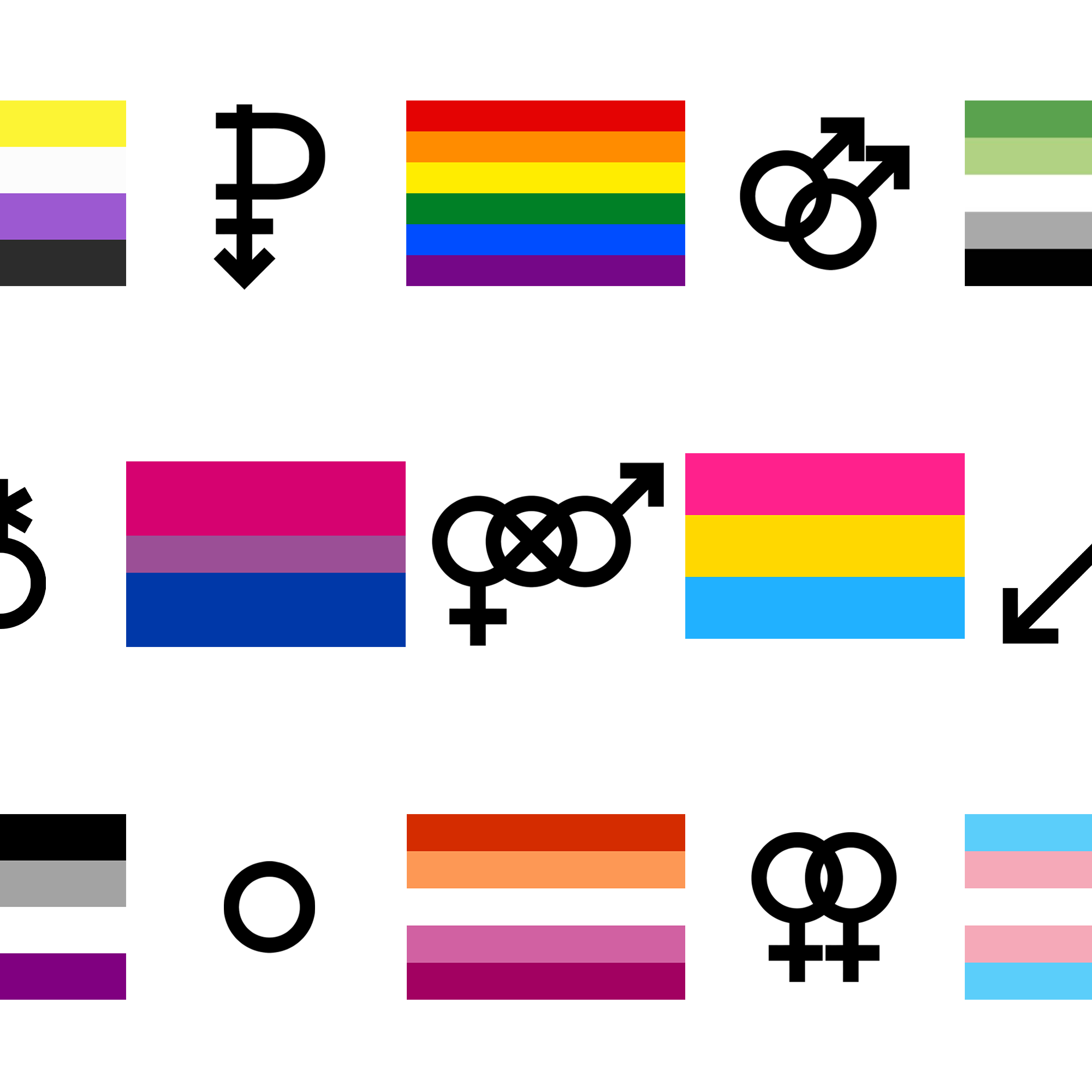Graphic by Christopher Ikonomou
How is the LGBTQ+ community defined? We are a collection of letters that correspond to labels that help us define who we are. I personally found that labeling was extremely helpful when defining my attraction to other people.
The attraction I felt toward members of my same sex has been prevalent since I was seven years old though at the time I didn’t describe it in terms of sexuality. However, as I matured, I recognized a desire for both boys and girls, so naturally, the label of bisexual seemed to fit me.
But that never seemed quite right; it didn’t encompass all of who I was in my sexuality. The simplification of sexuality can be argued as one of the problems with labeling. Human sexuality is a spectrum, and there isn’t a single box that can be checked off to encompass all the differentiations within desire or lack thereof.
I was introduced to pansexuality through a friend, and it was a label I had never thought of or even heard about before. Most people understand the meaning behind the letters in LGBTQ, but there is a myriad of other sexual orientations and gender identities encapsulated within the +. Pansexuality is one of these hidden orientations.
I identified bisexuality with the meaning that I would be attracted to men or women based on the attributes that make them the gender they present. Upon further inspection I found that I did not build attraction based on any qualities that related to sex or gender. It does not matter to me the gender of an individual, I found attraction regardless of gender.
This is where I struggle to label myself. Even though the pansexual label fits me the best, that does not mean it fully explains the way I feel about my sexuality. Though I feel I’ve found a community through having a labeled identity, there is a sense of constriction when explaining my sexual orientation to those outside the LGBTQ+ community.
A label can feel confining or even prejudiced against depending on what group of people I am around. This becomes even more prevalent when talking about gender, as misgendering and pronoun misuse are common among people unfamiliar with them. For some people, a label fits to a certain extent but feels like more of an explanation to cisgender heterosexuals than a tool for empowerment.
However, within the queer community, labels retain a kind of fluidity. People change their pronouns, sexual orientation, or gender identity consistently as they evolve within their queer identities. Changing labels can be an empowering experience that helps to form identity instead of shame.
For my entire life, I have been raised within the queer community. Growing up with two moms and immersed within queer culture established a sense of normality for me with having a queer identity. However, even growing up in a progressive and open household, my sexual orientation was still something that took me 18 years to feel comfortable proclaiming openly.
Especially for young queer people, it can be difficult to describe the range of emotions attached to sexual orientation or identity. This stems from the heterosexual cisgendered way in which children are raised. Queer representation in media has become much more prevalent in recent years, but there is still the forced idea that “normal” people are straight and cis, and everything else needs a label so “normal” individuals can identify what you and your preferences are.
If society did not put such an emphasis on labeling what is outside the norm, I don’t know if I would feel the need to encompass my sexual identity within one specific label. Personally, I feel I am attracted to personality over gender or outward appearance, which fits most closely with the pansexual label. It was helpful for me to put my sexual orientation into something that can be understood with a single word, yet the nuances of sexuality should not be restricted.
The word “queer” was, and still sometimes is, an insult used against the LGBTQ+ community. It was used as hateful umbrella terminology to point out that members of my community are different. They are “queer.” One Webster Dictionary definition for queer is “Differing in some way from what is usual or normal.”
We are different, but within our community, our differences make us stronger and more united. There is no concrete definition of “normal” within the real world. Every person is unique in some way, so by proclaiming ourselves as queer, we break down the barrier that being weird, different, or outside the norm is a bad thing.
Finding identity can be an arduous task for anyone. Some people find home within the queer community before they turn thirteen while others hold their true self behind closed doors, hidden from the world. In cases of hidden sexuality or sexual orientation, a label is not enough to liberate them from their false lives. It may in fact be the label itself that scares them.
Having to identify oneself as a member of the queer community can be terrifying or even dangerous for some people. Labeling can become something that harms a person, brands them, follows them, becomes inescapable.
Though I love having a label that describes my identity, in my perfect world, labels would be obsolete. People are just people, and we can accept them without knowing “which way they swing” or “what’s under their dress.” Every person on this planet is queer in some way. We all differ from each other. The question is, why do some differences matter so much more than others?
Credits:
Author: Taylor Kunin-Ur (She/Her)
Artist: Christopher Ikonomou (Xe/He)
Copy Editors: JQ Shearin (She/Her), Bella (She/They)

